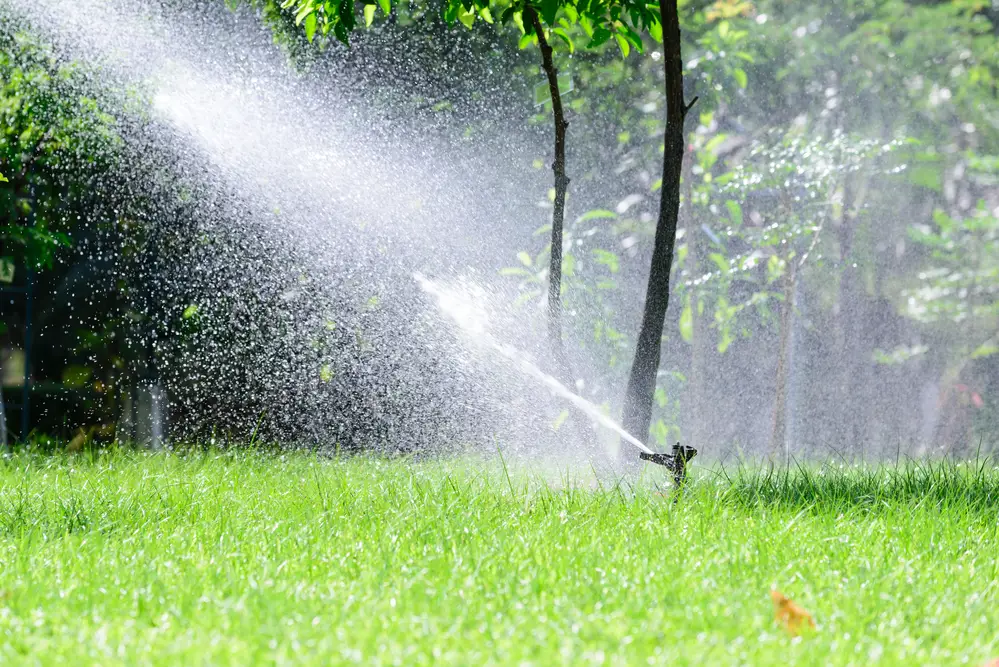When planting trees on your lawn, you want to be careful of their position with regard to your lawn’s sprinkler lines.
This also applies when installing sprinklers in a lawn with trees and shrubs.
Apparently, the roots of a tree can cause significant damage to your sprinkler pipes, and it might be costly to repair.
In this regard, How Close To A Sprinkler Line Can You Plant A Tree?
While contemplating this, there are two key things you must put into consideration. One is the root system of the tree you want to plant, whether it is dense and shallow or a deep spread out of the root system. It is equally important to check on the water needs of the tree you are planting. The general rule of thumb is to determine the likely extent of roots and then choose an ideal planting site.
It is important to note that some trees have higher water needs than others.
If you have trees that need a lot of water on your lawn, then there is a high likelihood that the tree will draw your lawn water, leaving the grasses to strive for the little available water.
Apparently, you are planting trees to enhance your lawn landscape and not to damage the lawn.
Therefore, maximum precautions must be applied. Keep reading to learn more about lawn sprinklers and tree planting.
Determining The Root Extent Of The Tree You Want To Plant
You want to know how wide or deep roots your young tree can go once it matures. This is to help you minimize or avoid damaging the sprinkler lines installed in your lawn.
In most cases, tree roots are generally expected to extend to about one and a half times the canopy diameter.
In this regard, you want first to determine the diameter of a mature canopy of the same tree species, then determine if its roots will damage sprinklers.
You can simply move the tree position to ensure maximum space between the roots and sprinkler pipes.
A small tree, with a canopy of about 10 feet in diameter, will likely have a root system that extends to 15 feet distance from the trunk.
Most trees have roots that go deep, not the ground, to a distance of about 2-3 feet. However, other trees develop widespread surface roots that do not get a foot deeper into the ground.
A sprinkler that is aligned 12 inches deep in the topsoil might not be affected by roots.
Sprinkler lines placed deep in the soil are likely to be damaged by growing roots.
Notably, if your tree has shallow roots, it will likely cause havoc with the sprinkler lines.
So whichever the case, sprinkler lines will likely be affected when trees are planted too close.
Putting the lines deep in the soil protects them against winter freezing; therefore, you cannot opt to put the lines above the ground.
Once you have identified the root structure and length of mature tree roots, you can confidently choose a planting site that is of appropriate distance from the sprinkler line.
Two Problems Trees Can Cause Sprinkler Lines
1. Crushing The Sprinkler Heads And Valves
When trees and roots continue to grow, they can damage your irrigation pipes’ valves and sprinkler heads.
When the valves are damaged, the movement of water is restricted, and eventually, the pipes might burst out due to pressure.
The side of the lawn that should be supplied with water from a closed head will start to weather, causing an eyesore on your lawn.
2. Suppressing The Sprinkler Lines
As roots mature, they can intertwine along the sprinkler pipe, leaving some parts suppressed and unable to pass water to other parts.
It might be very hard to realize when pipes are being compressed because it happens gradually.
It is until you closely examine the delivery of the sprinklers that you can sense a difference in pressure and seek to find the cause.
One common indicator that your sprinklers have a problem with is the difference in water pressure.
When you realize that there is good pressure on only one lawn sprinkler head and pore pressure on another head, then there is a problem within the lines.
A humming or buzzing sound from the yard, when listened to carefully, comes from near a tree; there must be an issue with the pipes passing by that tree.
Water bubbling up from the ground near a tree indicates that there is a leakage or pipes have burst around that area.
Depending on the size of the tree and the extent of its root structure, repairing a burst sprinkler pipe can be very costly.
In some cases, you might have to cut down the tree and remove its roots before you successfully repair the pipes.
To avoid such extreme future costs, hire a lawn sprinkler expert to assess your lawn and advise you on tree planting.
Even after planting trees on your lawn, as advised by a lawn care and sprinkler advisor, you must do regular checks to confirm that everything on the lawn is in good condition.
Conclusion
Lawn care practices are intense, and you might even end up forgetting to perform other care practices.
However, you cannot forget to water your lawn, and to make this easier, and it is better to install sprinklers in the lawn.
With well-functioning sprinklers, you just need a single control point, and once water is turned on, it can be supplied to the entire lawn.
Considering how relevant, effective, and efficient this sprinkler system is, you may not wish to damage it.
For this reason, you must take maximum precautions when it comes to planting trees near sprinkler lines.
Sources
https://garden.org/frogs/view/75492/

